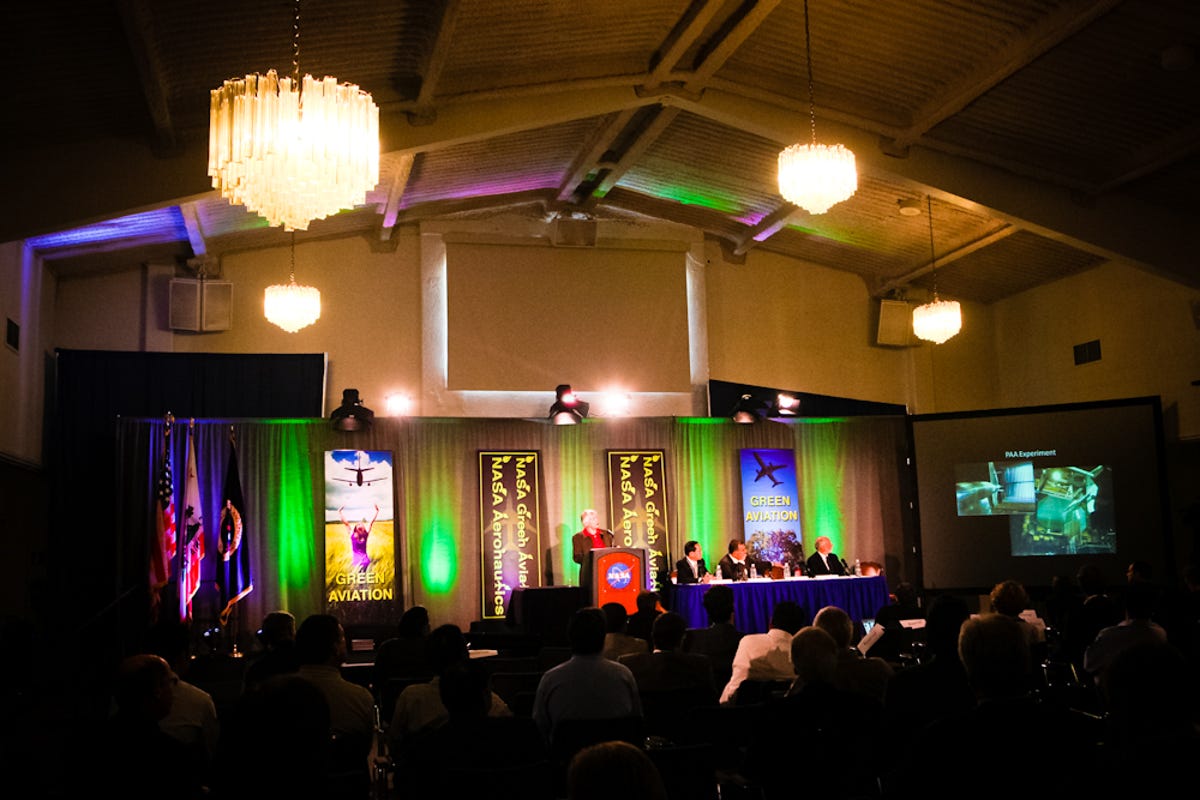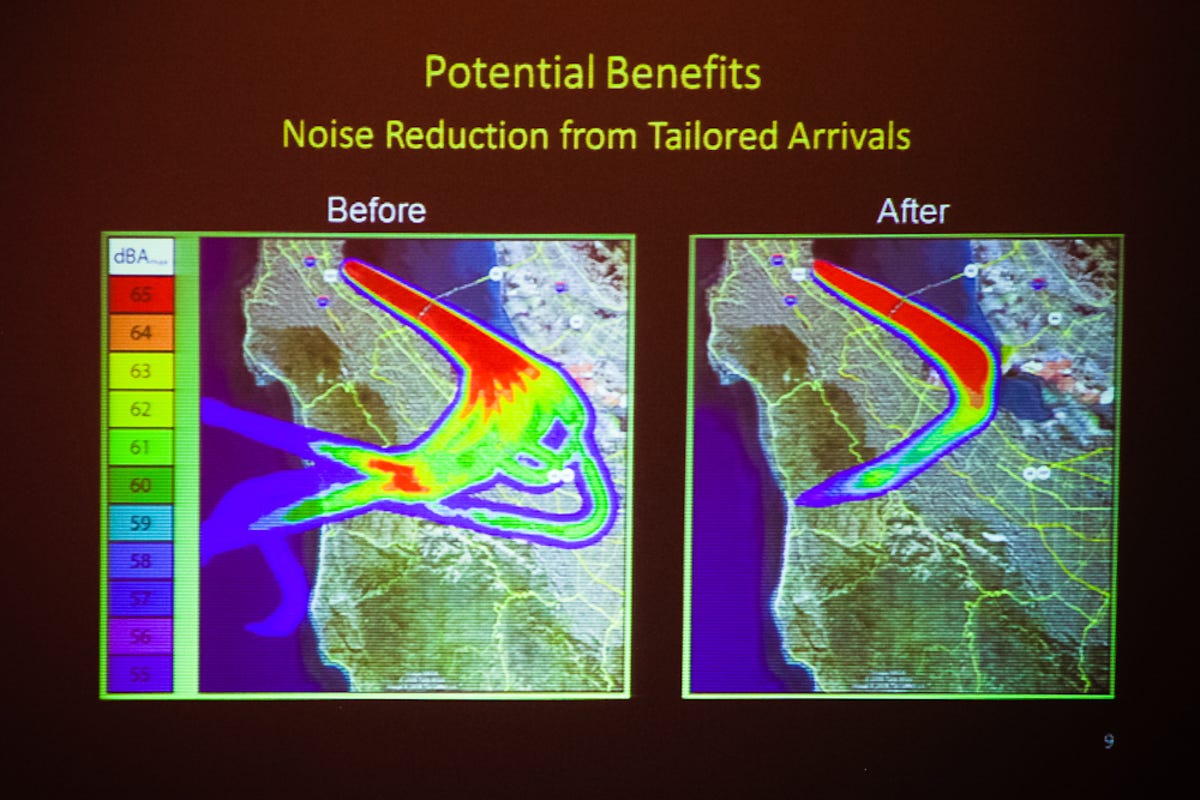NASA's newest ideas for flying clean and green (photos)
At the Green Aviation Summit, NASA is searching for innovations in aviation that will decrease the environmental impact of flying while improving convenience, reliability, and commercial benefits.

Policy summit
Using some state of the art technology and organization techniques, and a few simple tweaks to the system, NASA is exploring ways to improve the environment, reducing aircraft noise, emissions, and fuel consumption.
According to NASA, in 2009 704 million passengers flew in the United States, a number expected to increase to 1.21 billion by the year 2030.
Accommodating the travel needs for an increased population will require more airports and more flights, along with a substantial increase in engine emissions and noise, along with traffic jams and unknown effects on health and quality of life.
Even modestly better understanding and management of data and flight efficiencies can add up to a broad savings in economic and environmental costs. Made up of projects from NASA's existing portfolio of aeronautical research, the work toward greener flying is not part of a single project, but rather an effort at cooperation between programs. At the Green Aviation Summit, NASA's innovators are thinking big, sharing new ideas to improve the commercial benefits and convenience of taking flight.
450 million pounds of smog
The environmental effects of particulate emissions are poorly understood. One of the challenges to developing solutions to the pollution created by commercial aircraft is figuring out how to better understand the problem through better emissions prediction and computational modeling capabilities.
Better and more-accurate control of high temperature fuel actuators and pressure sensor development will lead toward more control over combustion, minimizing soot particles and hydrocarbons in exhaust plume particulates.
Dr. Jim Hileman from the MIT Department of Aeronautics and Astronautics
OMEGA Project
Funded by NASA and the California Energy Commission, one unique approach to alternative fuels is the OMEGA Project (Offshore Membrane Enclosures for Growing Algae).
Seeking to develop algae as a commercial fuel, and transfer the technology to the world by 2011, the OMEGA Project is exploring the possibility of using offshore photobioreactors to grow freshwater, oil-producing algae; process wastewater; and sequester carbon dioxide.
OMEGA Project
OMEGA Project
NASA believes it can demonstrate that significant quantities of sustainable, carbon-neutral algae can be repeatedly grown and harvested using energy from the sun for growth and the aid of movement from the waves for mixing.
One huge environmental benefit of this sort of ocean-farm production is that the system is not competing with agriculture for valuable land, water, or fertilizer resources.
The OMEGA modules form a closed-loop system that uses waste products as resources, producing biofuels while cleaning waste-water released into the oceans and capturing carbon dioxide typically released into the atmosphere.
Engine performance and alternative fuel
The availabilty of flight data, including aircraft performance, pilot intent, and atmospheric data, all affect the efficiency of a successful descent into airports, and improvements in data collection and organization can have a large effect on the industry, says Coppenbarger.
Trajectory predictions in en route airspace rely on the availability of data regarding aircraft state, aircraft performance, pilot intent, and atmospheric conditions. The use of real-time airline information for improving ground-based trajectory predictions has been a recent focus in the development of the Center-Tracon Automation System (CTAS) at NASA Ames. This paper studies the impact of airline flight-planning data on the accuracy of CTAS predictions regarding en route climb trajectory. The climb trajectory synthesis process is first described, along with existing input data.

Added noise reduction
Though economic savings are important, NASA hopes to ensure that future air traffic has a lower impact on the human environment, in terms of chemical, visual, and noise pollution.
Dr. Richard Coppenbarger's research into fuel efficient descents is aimed at reducing fuel consumption and achieving a more organized flight system, but it might also reduce noise pollution in communities around airports.
This visualization of traffic into San Francisco International Airport shows that by better organizing flight data and managing the arriving traffic with slow, continuous descent patterns, airports can greatly reduce the noise produced by passing planes.
Russ Smiley, Sikorsky Aircraft
Exploring additives such as biofuels and understanding the specific effects of their uses will be key to putting these alternatives into use with already existing engines.
As we move toward a fuel and propulsion system that will accommodate synthetic biojet, biodiesel, and biobutanol, we'll also see advances in the understanding of components such as nozzles, combustors, and turbines. Smiley also focused on the importance of developing a certification process for alternative fuels and engine components.
Penetration of use
As different fuel blends were used in the engines, engineers monitored performance and collected an emissions analysis.
NASA is searching for the aviation fuels derived from diverse and domestic resources that will decrease the environmental impact of flying while improving fuel supply security and price stability.
As researchers continue to explore options for improvement and to develop the tools of flight, Dr. Terry Thompson spoke at the Green Aviation Summit and reminded them, along with policy makers, that penetration of use into the world and adoption of policy is critical to achieving the long-term goal of limiting the environmental effects of aviation.

